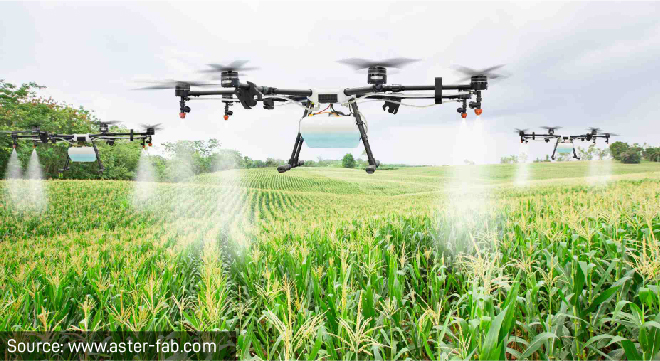Technological development, although rapidly accelerated by the Covid-19 pandemic, has been changing the insurance landscape for some time.
Nowhere have the effects of digitalisation been felt more acutely than in the agricultural sector, where technological innovation has propelled widespread change over the past decade.
An example is the emergence of precision farming, which employs several strategies and tools to optimise soil quality and crop yields and increase overall productivity.
Paradigm-shifting technologies have given rise to opportunities, but in doing so, have introduced new risks.
Jan-Hendrik Botha, the head of underwriting at Western, says process automation and new farming techniques that harness the power of data are effective means by which to increase efficiency.
“But smart equipment and systems require sizeable capital outlay and introduce new risks and exposures that must be mitigated by insurance products that are tailored to this evolving landscape.”
High-tech machinery needs specialist cover
Modern agricultural implements rely on a complex network of electrical components. For example, a diesel-fuelled harvester operates by means of an intricate electronic system that includes GPS navigation, computer systems and cameras. According to one study, in one series of combine harvesters, the number of electronic controllers involved in the operation of the implement has increased fivefold within 15 years.
The high value of the electronic and computer systems that power harvesters has seen the cost of these kinds of implements increase dramatically over the past few years, with the total of these components reaching more than R1 million.
In South Africa, where lack of capital is a barrier to entry, the adoption of smart equipment and systems has been relatively slow but is steadily increasing. These developments have led to the risk landscape in agriculture becoming more nuanced, to allow for specialist areas and types of risk.
Expanding on how this trend has influenced product development in the insurance industry, Botha says that previously, insurance for an agricultural vehicle required a straight-forward motor policy.
“But with the advent of electronically powered machinery, policies have been adapted to require cover for a mix of motor and electronic equipment to cover new risk exposures. This additional cover has resulted in higher insurance premiums.”
He says rating structures have remained consistent, or even decreased, because of the competitive nature of the industry.
Although the advanced technology being introduced into essential implements has boosted capabilities, these components are more susceptible to risks such as lightning strikes and fires. Exposures have therefore shifted from traditional driving accidents to the potential for electrical damage caused by harsh climate forces, power surges and equipment failures. Furthermore, in the case of artificial intelligence, in particular, the loss of data poses a significant threat to a farmer’s bottom line.
“These tech-driven trends have led insurers to structure policies to account for new, emerging risks under separate sections that apply exclusively to cover for electronic equipment and specific eventualities that might occur.”
Cover for drones
Drones are another example of how technology is being harnessed by the agricultural sector to improve efficiency, reduce the cost of labour and introduce more sustainable farming methods.
Currently, drones can be flown without insurance, but must be operated in accordance with the South African Civil Aviation Authority’s regulations. High-performance drones can cost more than R350 000 and introduce a new level of risk that requires specialist cover.
Botha says standard insurance products provide static coverage for drones (does not apply when in operation) and do not include liability coverage. Specialist products provide more extensive cover, which includes third-party liability, and are subject to specific terms and conditions.
Value of second-hand vehicles
Another emerging trend that is influenced by several macroeconomic factors, coupled with high inflation and its impact on supply and demand, is the increasing value of second-hand vehicles. The value of many of these vehicles, in some cases, exceeds their true retail value due to a shortage of vehicles, as well as parts and components.
It has now become common for consumers to purchase used vehicles at a cost that exceeds their retail value. But this has a knock-on effect on what consumers expect from insurers, and the potential implications for higher levels of underinsurance among South Africans is concerning.
Botha says insurers are accommodating client requests to insure above retail value, up to agreed percentages, subject to the increased market value being confirmed at claim stage.
“Companies like TransUnion, for example, have already established tools such as their Vehicle Price Index (VPI). The VPI evaluates the link between new and used vehicle pricing increases from a basket of passenger vehicles that includes 15 of the most popular manufacturers. The index is created using vehicle sales data from throughout the industry, and if market pricing anomalies persist, this might become a worthwhile price index for insurers to consider,” he says.




